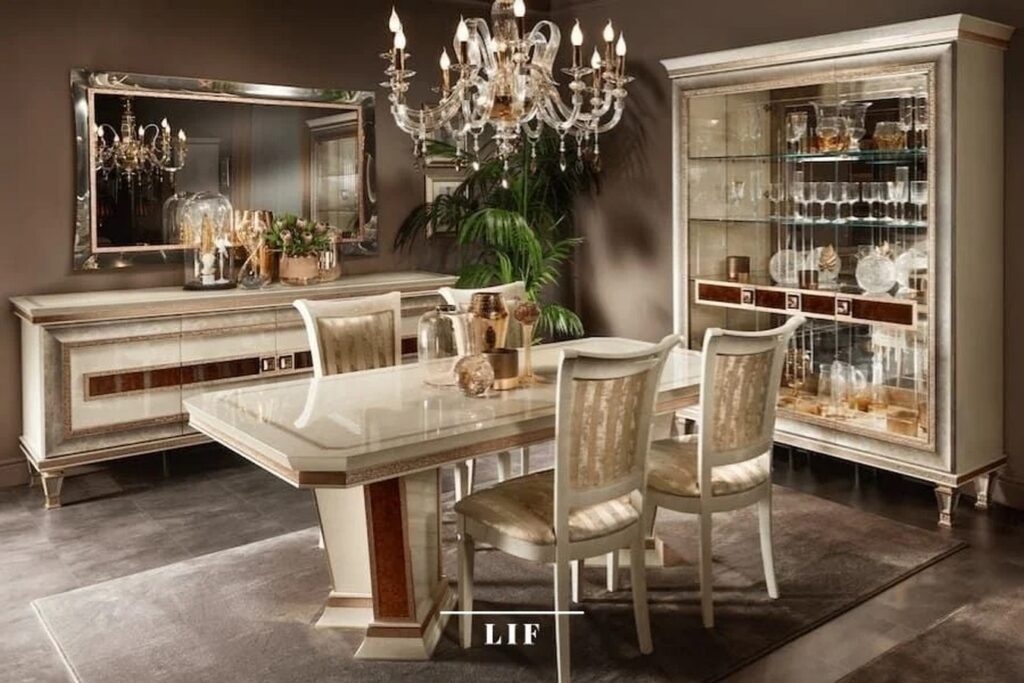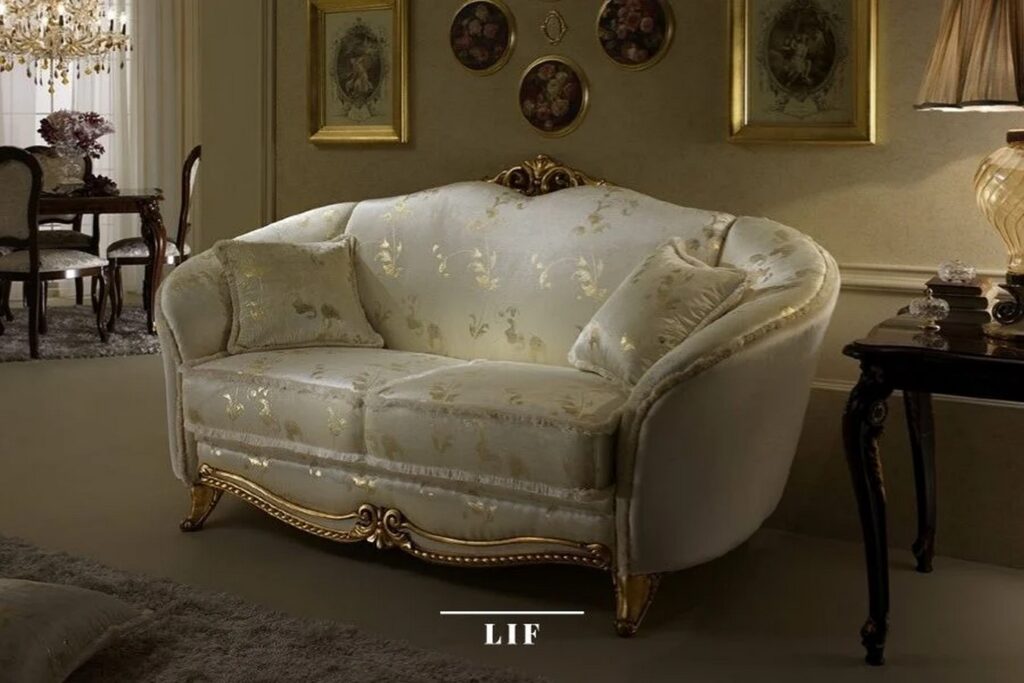
The New Classic style embodies a captivating blend of historical elegance with contemporary design elements, resulting in striking interior atmospheres. Whether it’s infusing modern minimalism with classical furnishings or revitalizing historic homes with contemporary touches, this style creates intriguing contrasts and bold design choices. If you’re interested in uncovering the secrets of New Classic design and bringing it into your own space, read on to learn more.

The Fascinating Contrasts of New Classic Style
The term “New Classic” itself implies a juxtaposition of concepts. It combines the allure of modern trends in design, including innovative lines, materials, colors, and finishes, with the timeless elegance of Italian classic style. This fusion creates interiors that are dynamic, diverse, rich, and opulent, yet balanced and harmonious. New Classic design thrives on blending different worlds to produce furnishing projects that are anything but ordinary.
Neoclassical Style House: Stylistic Rules
Luxury classic furniture embodies enduring charm, blending history, tradition, status, and refined taste. Over time, various stylistic currents have emerged around classical style, such as Baroque, Rococo, and Art Deco. New Classic Design represents a modern interpretation of classical elements, incorporating the essential characteristics of classical style while adapting to contemporary living spaces.

Stylistic Rules of New Classic Design
- Medium to Large Spaces: New Classic furniture thrives in spaces that allow for sumptuous, luxurious furnishings and accessories. While not necessarily requiring vast expanses, these spaces accommodate grand elements that epitomize the “more is more” aesthetic over minimalist designs.
- Attention-Grabbing Furniture: Central, often imposing, elements serve as focal points in New Classic design. Whether it’s a four-poster bed in the bedroom or a grand fireplace, sofa, dining table, or chandelier in the living room, these pieces command attention and set the tone for the space.
- Understated Palette with Color Accents: Classic interior design favors light, neutral backgrounds and walls, including tones of white, ivory, cream, beige, and grey. These serve as a canvas for accents of various wood types and pops of vibrant color, such as burgundy, sapphire blue, gold, emerald, olive green, and mustard, incorporated into furnishings and decor elements.
Striking a Delicate Balance Between Classic and Contemporary
New Classic design transcends fleeting trends to establish a distinct style that defies categorization. Instead of merely coexisting, the classical and contemporary elements in New Classic design complement and enhance each other. Successful integration occurs by preserving the strengths of both styles, identifying a central starting point, and achieving a harmonious fusion of classicist elegance with modern comfort and functionality.
In historic residences, New Classic style begins with conserving and restoring architectural elements of significance, such as stuccoes, coffered ceilings, mosaics, arches, and columns. These serve as the foundation around which the rest of the design unfolds, incorporating modern elements to lighten and balance the classic aesthetic without compromising its inherent sophistication.
Conversely, in contemporary apartments, New Classic design softens the rationality of modern architecture by introducing classic details like curved lines, silky fabrics, wood finishes, gold leaf accents, and neoclassical furnishings. These elements add touches of luxury, sumptuousness, and refinement to the clean, geometric lines of modern spaces.

Embracing Stylistic Contaminations
New Classic design celebrates the fusion of classical and contemporary influences, resulting in refined yet essential, luxurious yet light, and elegant yet not redundant environments. The harmony achieved between classic and contemporary elements creates interiors characterized by chromatic harmony, compositional balance, and a seamless blend of seemingly disparate inspirations.
In essence, New Classic design offers a timeless and versatile aesthetic that transcends conventional boundaries, inviting you to explore the interplay between tradition and innovation in creating captivating living spaces.












